Bodyweight exercises involve using one’s own body weight against the force of gravity to enhance strength, power, endurance, and flexibility.
These exercises are a fundamental form of strength training and are popular among gym goers and professional athletes alike. But just how effective are these workouts compared to other forms of strength training and do they have any advantages or disadvantages? Find out more about that in the lines below. We also offer a couple of popular samples of bodyweight workouts for you to try.
Bodyweight Exercise: How Effective Are They?
According to an article in Strength and Conditioning Journal 1, a disadvantage of bodyweight training is that it is often perceived as too easy for the experienced and too hard for the novice – in other words, ineffective. However, this is a misconception. Bodyweight training can be as effective and useful as other forms of strength training when done right.
It’s a well-known fact that certain forms of body weight training like push-ups, for example, require more strength and stabilization than bench presses. Generally, a pushup will cause you to resist the force of 45-60% of your bodyweight. For a 200 pound man, that could be 90-120 pounds that you are resisting against. Furthermore, women may find such upper-body exercises more challenging than their male counterparts, so they definitely will experience the muscle-building and power-enhancing benefits of these workouts.
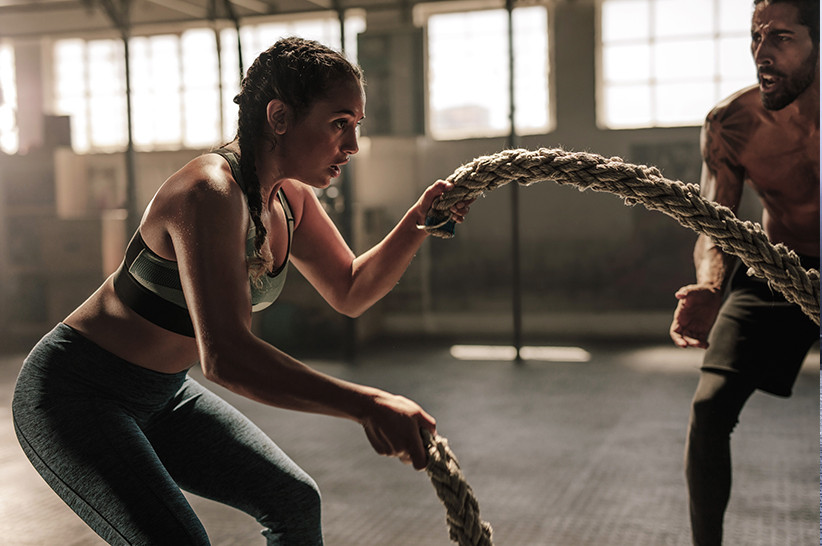
And to prove these things are truly the case, a study published in the Journal of Exercise Science and Fitness found that push-ups with a similar load to bench presses induced similar muscle gain and strength 2. A different study found that bodyweight training was comparable to combined training (aerobics with resistance exercise) in premenopausal women at high risk of diabetes.
But all in all, bodyweight training will provide the most benefits to those who are otherwise inactive and athletes during their off-season. Studies show that inactive folks lose 3-8% of their muscle mass per decade, and resistance training can help slow down this process along with helping increase bone mineral density, improve cardiovascular risk factors, and more 3.
Bodyweight exercise for weight loss
According to the American Orthopaedic Society for Sports Medicine, “when it comes to obesity and weight loss, any exercise seems better than none at all 4.” So, bodyweight workouts can definitely be used to support weight loss. Furthermore, the American College of Sports Medicine recommends strength training as an integral part of an exercise program to gain the maximum benefits of exercise – weight loss included. But how exactly can exercise designed to boost strength and muscle mass help with excess body fat?
According to most current evidence, strength training like bodyweight exercise help with weight loss mainly by preserving muscle mass and, with it, resting metabolic rate (RMR) 5. Your RMR is the rate at which your body burns calories at rest, and it depends a lot on the strength and the size of your muscles. So, a higher RMR makes weight loss easier. Besides that, strength training helps prevent muscle wasting during weight-loss diets.
Bodyweight exercise for building muscles
Bodybuilders know that resistance is key to bulking up. However, most also seem to believe that this resistance needs to come in the form of bench presses, dumbbells, barbells, rowing machines, and other equipment. But this isn’t really a requirement. All your muscles need to grow is steady resistance and tension. This along with rest and proper technique, can help you to build serious muscle using nothing but the weight of your own body and the completely free and easily available force of gravity.
Consider, for example, gymnasts. These are one of the strongest and muscular athletes out there and most perform calisthenics to achieve high levels of balance, flexibility, agility, coordination, but also strength and endurance. And studies show that calisthenics like push-ups, for example, boost muscle strength and thickness 6.
All in all, know that bodyweight training was designed to help you get bigger and stronger muscles. “But how does this training do that?” you may ask. Well, a simple explanation is that training causes mechanical stress to muscles, causing them to break down and then re-build the fiber structure and adapt by becoming bigger, stronger and more enduring. This makes future load easier to handle.
Advantages of Bodyweight Exercise
In case you need more convincing to start doing bodyweight exercises, here are additional advantages you can expect:
1. Convenient and cost-effective
No need for expensive gym memberships, exercise equipment, training gear, and extra hours. You can do bodyweight training anywhere and anytime. This form of workout is accessible to everyone and you also won’t need to learn how to use gym equipment.
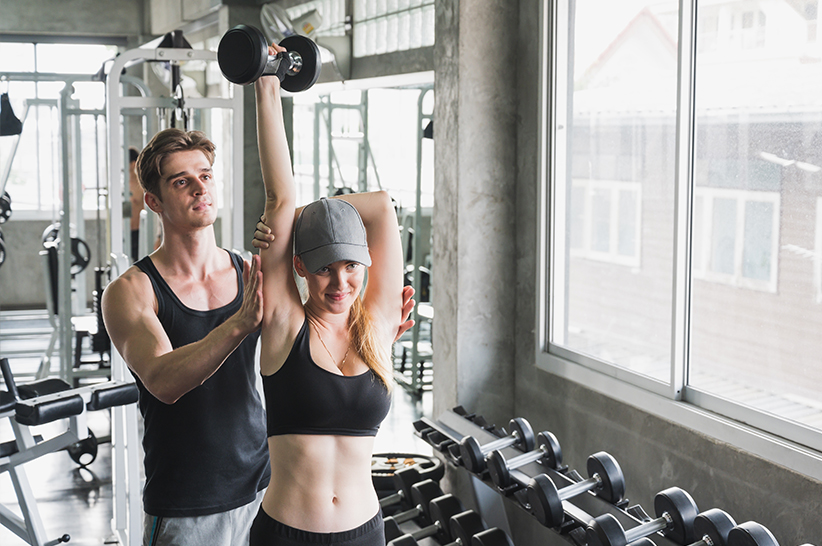
2. Low investment
You don’t need to invest crazy hours of your time each week to see the benefits of bodyweight training. This form of training can offer a full-body routine involving a couple of sets of simple exercises with short breaks in between, and they build muscle just as effectively.
3. Improved balanced
Almost all form of bodyweight training can also double as balance and flexibility training. By relying on your own body during workouts, you’re automatically improving your core muscles and strength in your limbs, particularly your feet – these are things which are key to improving one’s balance and flexibility.
4. Doubles as cardio
In our fast-paced society, everyone can benefit from two-in-one forms of workouts. Plyometrics, which are a popular form of bodyweight workouts, provide the benefits of strength training and cardio in one exercise.
5. Variety
There are so many different forms and types of bodyweight training that it’s impossible to keep count. While you can easily get bored with your same old cardio and gym routine, you’re less likely to get bored with different forms of bodyweight training done at different settings (your home, the park, gym, vacation, etc.).
5 Best Bodyweight Exercise for Men
1. Push-ups
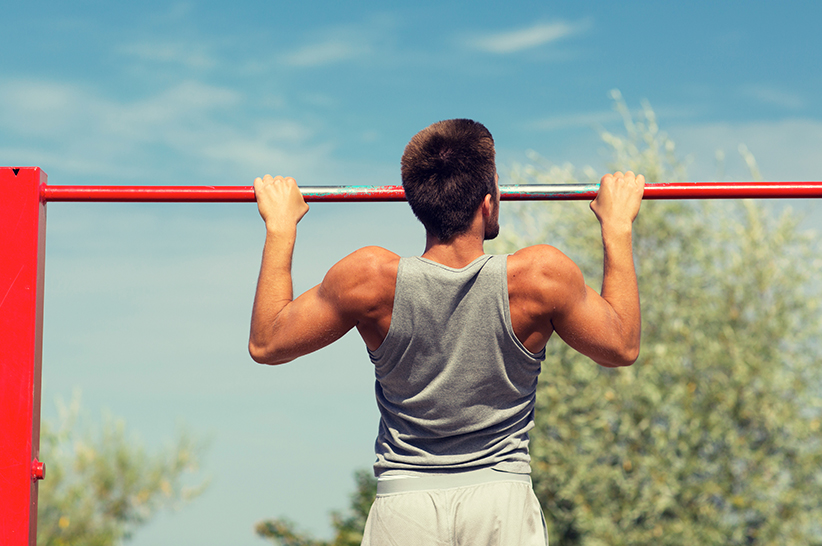
Try performing 20 reps of this classic bodyweight exercise three times a week. When done correctly, this exercise works every major upper-body muscle such as the pectoral, triceps, biceps, deltoids, rhomboids, and the latissimus dorsi. To perform this workout correctly, make sure to place your palms directly underneath your shoulders. Squeeze your glutes and abs to create more tension to maximize efficiency during the execution of the exercise.
2. V-Sit holds
Lie down on your back with your arms and legs outstretched. Start by simultaneously raising your torso and legs, extending your hands up to touch your feet. Try holding this position for 5 to 10 seconds. Don’t roll your shoulder blades forward and keep your back straight. V-sits are excellent for core strength and working the abdominal muscles.
3. Pull-ups
This workout can be done at the park or any other place where you can find a pull-up bar. Grab the bar with palms facing away from you and arms fully extended. Your hands should be a bit wider than shoulder width. Grab the bar with your palms facing away from you and your arms fully extended. Squeeze your shoulder blades, exhale, and bring your elbows towards your hips to get your chin above the bar. Slowly lower from the starting position, and start another pullup. Pull-ups work mostly your upper back, shoulders, and biceps muscles.
4. Bodyweight squats
Stand straight with feet shoulder width apart. Place hands behind your head or extended in front of you. Inhale and flex your knees and hips. Lower your body until your parallel with the floor. Exhale and straighten legs to stand. Repeat 15 times. Squats work the lower body, especially the glutes and thighs.
5. Burpees
This full-body exercise combines all the benefits of strength training with aerobics. The basic burpee is a four-step workout. Start in standing position and move into a squat with palms on the ground. Kick feet behind you into a plank position. Immediately return feet into squat position and stand up from the squat position.
5 Best Bodyweight Exercise for Women
1. Push-up side plank
This exercise works chest muscles and is great for beginners. Get into pushup position on your toes and your hands a bit over shoulder width apart. Lift your upper body by flexing the elbows. Keep your body straight as you return to initial position. Do one push-up and as you come up, shift your weight on the left side of your body while bringing your right arm up into a side plank.
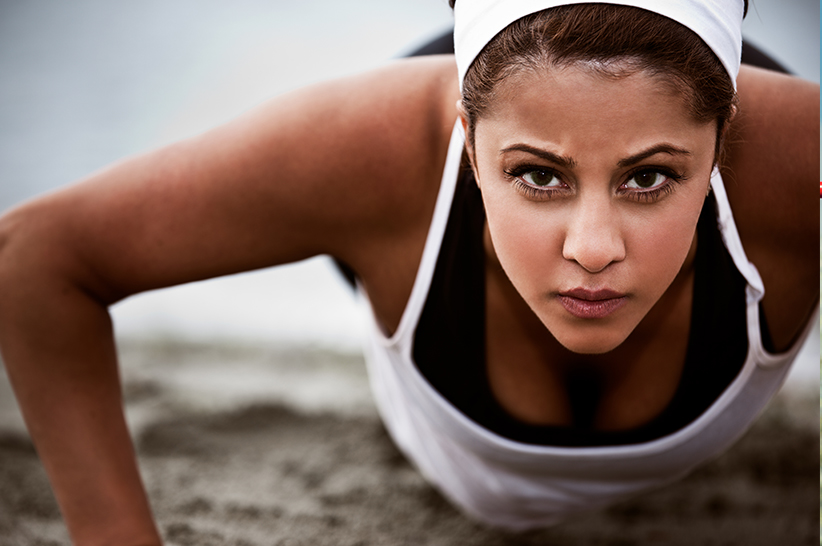
2. Wall sit
This workout strengthens the quadriceps muscles and boosts balance. Stand in front of a wall with feet hip-width apart. Lean back so your head, shoulders, and glutes are touching the wall. Walk your feet forward about one foot. Slide down the wall until your thighs are parallel to the floor.
3. Jump lunges
Start in a lunge position with one foot in front. Create a 90-degree angle with both legs and place your arms by your sides. Lower down a bit and quickly jump into the air. Switch the legs and land in a lunge. This is an advanced move and may take a while before you can increase your repetitions.
4. Jumping jacks
A simple bodyweight and cardio exercise that you can do anywhere, any time. It’s great for bone strength, balance, and for working the whole body. Stand straight with arms to your sides. Jump and spread feet beyond hip-width apart and arms above your head. Repeat as much as you like.
5. Boat twist
This one engages the core, hip flexors, upper back, and quads. Sit on the floor, knees bent, legs together, and arms at your sides. Your weight should be on your tailbone. Lift your feet off the floor, extend legs until straight. Extend arms trying to reach your toes. Hold legs steady as you rotate your upper body side to side, keeping your arms straight.
How Often Should You Do Bodyweight Exercise to See Results?
Do bodyweight exercises 3–4 times per week, taking rest days in between to give your body time for proper muscle recovery. Try doing the recommended 150 minutes of workouts a week or 30 minutes 5 days a week 4. At this pace, you should be able to see the first results within 3-4 weeks.
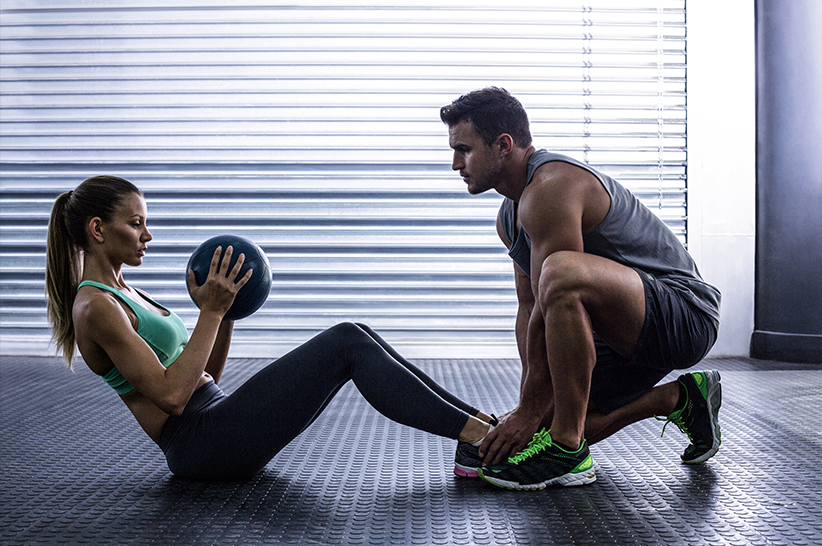
How Long Will Your Body Recover?
The amount of time required to recover between workouts varies between individuals as well as the intensity of their workouts, which muscle groups were involved, nutrition, sleep, age and other factors. But as a rule of thumb, most people do best with at least one day of rest between workouts, especially with intense exercise. However, you don’t necessarily need to spend a full day resting. Light to moderate aerobic activity can also be included in the recovery process. This is known as active recovery, and studies show it does not lead to any negative effects 7.
Is Bodyweight Exercise Enough?
Studies show that aerobic fitness is essential to how well you respond to other forms of exercise as well as the rate of your recovery after intense workouts 8. So, bodyweight workouts won’t be enough unless you perform full-body workouts that also include some type of aerobic training. Good examples of such workouts include power skips, burpees, mountain climber twist, jumping jacks, and plyometric push-ups.
Bodyweight Exercise + Keto Diet: Will It Speed Up Results?
A study involving overweight women performing resistance training while following a keto diet found that led to a reduction in body fat and no loss of muscle mass 9. However, bodyweight workouts combined with the keto diet can also promote muscle building if you increase the intensity of your workouts over time and combine that with adequate protein intake around your workouts. Don’t worry about needing an insulin boost from carbs for muscle building. Once you become keto-adapted, your body will become efficient at utilizing fat for workouts and preserving circulating glucose for anabolism.
Conclusion
Bodyweight workouts are a great alternative to other forms of strength training that involve gym memberships and expensive equipment. These workouts also provide unique benefits not seen with other training such as cardio, flexibility, and balance improvements alongside strength, power, and endurance.
Takeaways
- Bodyweight training is a type of resistance training that uses one’s body weight against gravity.
- Anyone can do bodyweight training, anytime and anywhere.
- There are many different types of bodyweight training, but the best bodyweight training workouts are those that also include features of cardio, flexibility, and balance training.
- When used alongside a keto diet, bodyweight training can lead to fat loss while muscle mass remains preserved or increased.



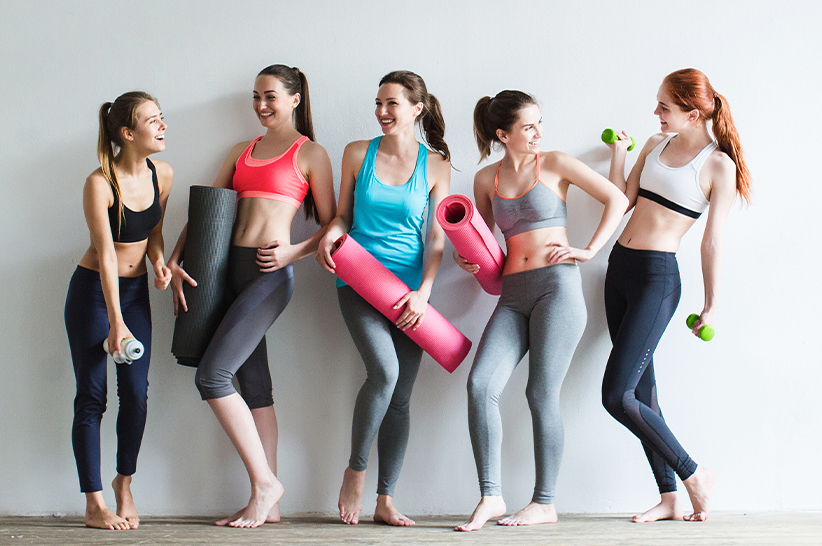






![Juicing for Weight Loss: Everything You Need to Know [Plus Recipes]](/wp-content/uploads/2019/08/Juicing-for-Weight-featured-image.jpg)









